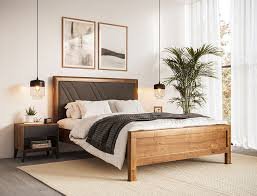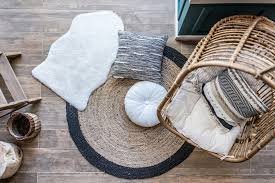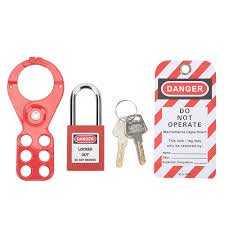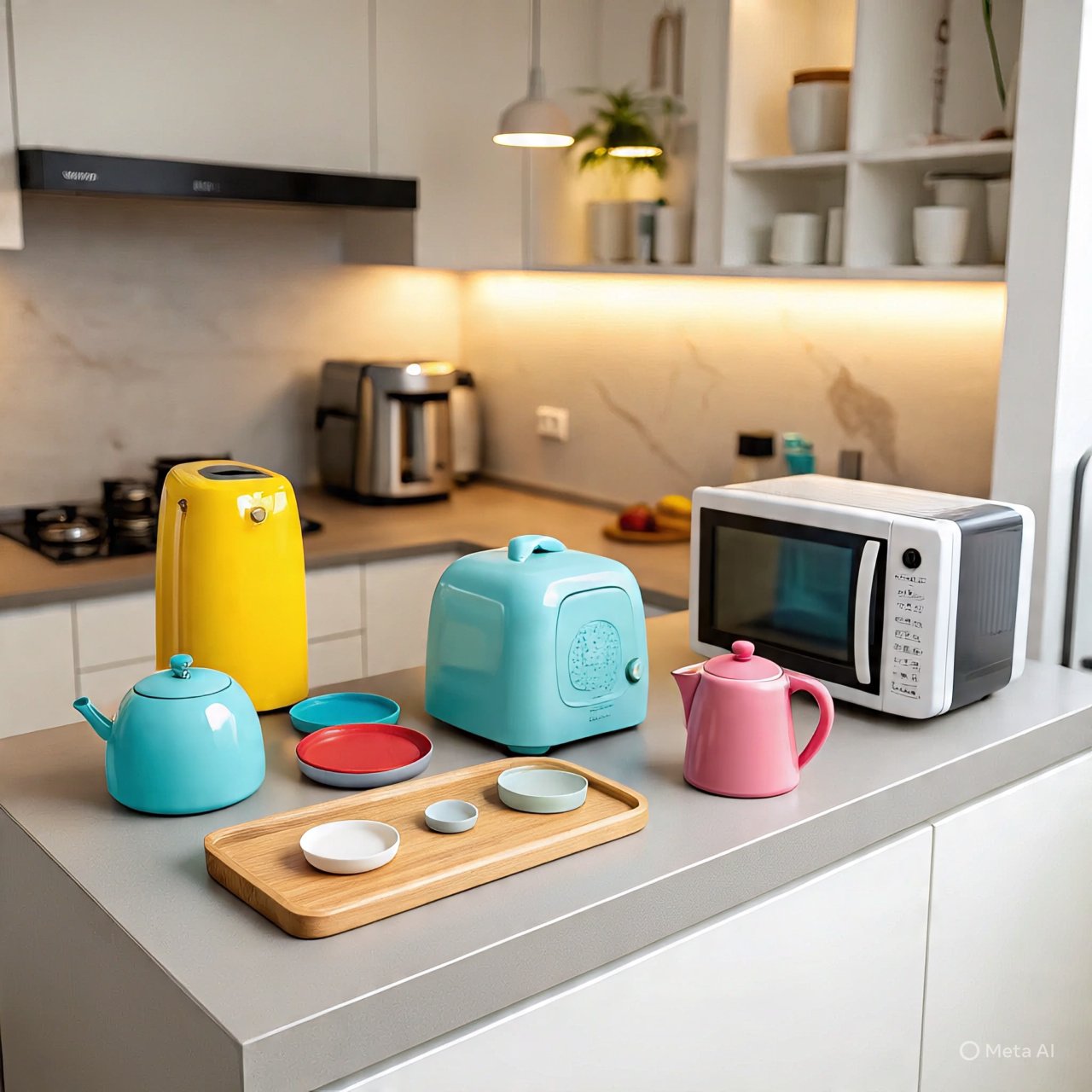Introduction
Safe rooms are critical components of healthcare settings that focus on behavioral health, particularly in mental health care facilities. These rooms provide a safe, secure, and therapeutic environment for patients who may be experiencing emotional or psychological distress. The furniture within these rooms plays a significant role in ensuring that the space is both comfortable and functional while prioritizing patient and staff safety.The design of behavioral health furniture in safe rooms must strike a balance between ensuring the safety of patients and creating a therapeutic, calming atmosphere that promotes healing and recovery. This article will explore the essential furniture needed for safe room design, including materials, layouts, and key furniture components that contribute to both the safety and comfort of patients in behavioral health settings.
Why Behavioral Health Furniture is Critical in Safe Rooms

Behavioral health furniture is not just about aesthetics its design and functionality are crucial for maintaining safety and comfort. Patients in crisis are often highly agitated and unpredictable, making it necessary for furniture to support both physical and emotional needs while minimizing the risk of injury or harm.
- Safety: Preventing self-harm and injury is a primary concern. The furniture must be free of dangerous or sharp edges, be anchored securely to avoid misuse, and include anti-ligature designs to prevent hanging.
- Comfort: Patients in safe rooms may spend long periods in these spaces, so comfort is important for promoting relaxation and reducing anxiety.
- Therapeutic Design: The room and its furniture should foster a healing environment by integrating calming, supportive elements that encourage emotional stability.
Understanding the Role of Behavioral Health Furniture in Safe Room Design

Furniture in behavioral health safe rooms must go beyond functionality to support patients’ emotional and physical needs. It is crucial that the furniture contributes to creating a calming and secure space that facilitates healing and therapy. Key considerations in designing this furniture include security, comfort, and ease of cleaning.
- Patient Safety: Furniture should be built with safety as a top priority, incorporating features that prevent misuse or harm.
- Emotional Support: The design should incorporate soothing, calming elements, such as soft seating, neutral colors, and ergonomically designed furniture that support a non-threatening environment.
- Staff Efficiency: Furniture must allow staff to monitor patients effectively and respond to crises quickly.
Key Differences in Behavioral Health Furniture for Safe Rooms

Behavioral health furniture must be designed specifically for the unique needs of patients facing emotional or psychological distress. These include anti-ligature furniture, which prevents patients from using furniture components to cause harm, and non-intrusive designs that foster comfort and safety.
- Safety Features: Furniture must be tamper-resistant and designed to minimize the risk of injury.
- Functionality: Furniture should serve its intended purpose without creating obstacles for staff or patients.
- Durability: Given the high use in these settings, furniture should be durable and easy to clean, able to withstand rough handling while maintaining its function.
Essential Furniture Components for Safe Rooms
Seating Chairs and Sofas

Chairs and sofas in safe rooms must provide comfort while remaining secure and tamper-proof. Soft, rounded edges are essential, along with non-removable cushions to avoid misuse.
- Design: Chairs and sofas should be securely anchored, offering flexibility while preventing movement or tampering.
- Materials: Non-absorbent, durable, and easy-to-clean materials are necessary to maintain hygiene and comfort.
Beds and Mattresses

Beds must be low to the ground and anti-ligature to reduce the risk of injury. Firm yet comfortable mattresses are crucial for promoting restful sleep.
- Safety Design: Anti-ligature beds ensure that there are no exposed parts that could be used for hanging or self-harm.
- Durability: The bed frame and mattress must be designed to withstand constant use and be easy to clean.
Desks and Tables

In rooms used for therapy or activities, sturdy desks and tables are essential. These pieces of furniture should be secured to the floor and designed to avoid injury or misuse.
- Non-intrusive Design: Tables should have rounded edges and be made from durable, tamper-resistant materials.
- Secure Storage: Drawers or storage areas should be locked to prevent access to dangerous objects.
Materials and Safety Features in Behavioral Health Furniture
Non toxic Non absorbent Materials

Furniture in safe rooms should be made from non-toxic materials that do not emit harmful chemicals, as well as non-absorbent materials that are resistant to liquids and contaminants. This ensures easy cleaning and maintains a hygienic environment.
- Water-resistant surfaces are also necessary to prevent liquid absorption and facilitate cleaning.
Tamper resistant and Impact resistant Designs

Behavioral health furniture must be tamper-proof, preventing patients from dismantling or using furniture components for harmful purposes.
- Heavy-duty materials: Furniture should be made from reinforced materials like steel or high-density plastic to withstand physical abuse and misuse.
- Impact-resistant surfaces: The furniture must endure wear and tear, maintaining functionality even with rough handling.
Furniture Designed for Safety
Rounded Edges and Soft Surfaces

Furniture in behavioral health settings should feature rounded edges and soft, non-breakable surfaces to prevent injury from falls, accidents, or violent behavior.
- No protruding elements: To minimize injury, avoid any parts of the furniture that could serve as ligature points.
Secure Anchoring and Anti ligature Features
All furniture should be secured to the floor or walls to prevent it from being moved or misused. Anti-ligature features are particularly critical in preventing self-harm.
- Anti-ligature beds and chairs: Designed to remove any part of the furniture that could be used for hanging, helping to protect vulnerable patients.
Locking Mechanisms and Safety Access
Many pieces of furniture, such as cabinets or storage areas, require locking mechanisms to ensure that dangerous items are securely stored out of reach.
- Controlled access: Only staff should have the keys or codes to open these areas, ensuring the safety of patients.
The Role of Furniture in Creating Therapeutic Environments
Comfort and Accessibility
Furniture must provide comfort and accessibility to patients, encouraging relaxation and facilitating treatment. Furniture should promote a sense of autonomy and dignity, making patients feel respected while fostering engagement in therapeutic activities.
- Ergonomic designs: Chairs and beds should be designed to support the patient’s comfort for long stays, with adjustable settings to suit individual needs.
Reducing Stress with Ergonomic Designs
Ergonomic furniture helps minimize physical discomfort, which can reduce anxiety and stress. Well-designed furniture that supports the body encourages patients to relax, especially when dealing with long periods of confinement.
- Ergonomically designed seating reduces pressure points and physical discomfort that might exacerbate stress or agitation.
Furniture Layout and Room Design
Optimizing Space for Functionality
Proper furniture layout is key to maximizing room functionality and ensuring safety. Furniture should not overcrowd the space, and pathways should remain clear to allow for easy movement and intervention.
- Flexible layouts: Modifying furniture placement allows for different activities, such as therapy sessions or individual relaxation time.
Clear Sightlines for Staff Observation
An essential feature of safe room furniture design is ensuring that staff can observe patients without compromising their privacy. Proper furniture layout provides clear sightlines for monitoring patient behavior while maintaining safety.
- Easy access: Furniture should allow staff to respond quickly to patient needs or emergencies.
Choosing the Right Furniture for Different Behavioral Health Needs
Acute vs Long Term Care
The type of furniture used will vary depending on whether the patient is in acute care or long-term care. Acute care requires more durable and functional furniture, while long-term care needs furniture that emphasizes comfort and therapeutic support.
- Acute care: Furniture should be easy to disinfect and simple in design.
- Long-term care: More comfortable, ergonomically designed furniture is necessary for extended stays.
Children Adolescents and Adult Care
Different age groups have unique furniture needs. Child and adolescent care require furniture that is smaller, adjustable, and playful, while adult care focuses on sturdier, more robust designs.
- Children’s furniture: Should be smaller, lightweight, and designed to prevent manipulation.
- Adult furniture: Must be strong, with additional features to support both safety and comfort for adults.
The Integration of Technology in Behavioral Health Furniture
Smart furniture equipped with sensors and integrated technology can enhance the functionality of safe rooms by improving monitoring and care delivery.
- Sensor-embedded furniture: Furniture with built-in sensors can track patient movements or alert staff to changes in a patient’s condition.
- Automated features: Adjustable beds and chairs that automatically respond to patient needs ensure comfort without requiring manual adjustments.
Selecting Non Toxic and Sustainable Materials for Safe Room Furniture
Furniture used in safe rooms must be constructed from non-toxic, sustainable materials to ensure both the health of the patients and the environment.
- Environmentally friendly options: Using sustainable materials that are non-toxic ensures a safe, environmentally conscious choice for healthcare facilities.
- Durability: Furniture should be able to withstand the rigors of constant use while being easy to maintain.
Durability and Longevity of Furniture in Behavioral Health Settings
Given the high turnover and use of furniture in behavioral health settings, the durability of furniture is critical to maintaining safety and reducing costs.
- Heavy-duty furniture: Should be designed to last without degrading, even under high usage.
- Long-term cost savings: Investing in durable, easy-to-repair furniture can save money in the long run.
How Furniture Design Can Support Staff Efficiency and Monitoring
Furniture layout should also support staff efficiency by making it easy for healthcare workers to move freely and monitor patients.
- Mobile furniture: Allows for quick adjustments to the space if needed.
- Visibility: Ensuring that staff can easily observe patients without obstruction or interference.
The Impact of Furniture on Reducing Patient Aggression
Furniture design can play a role in reducing patient aggression by offering calming, non-confrontational elements that reduce stress.
- Anti-agitation features: Soft, calming colors and shapes help minimize triggers that could escalate a patient’s behavior.
Customizable Furniture for Patient Centered Care
Customizable furniture offers flexibility to meet the specific needs of individual patients, enhancing both comfort and safety.
- Adjustable elements: Furniture that can be adapted to suit the patient’s physical and emotional needs.
- Personalized options: Encourages patient autonomy and comfort.
The Role of Color Psychology in Furniture Design
The psychology of color is essential in behavioral health settings. Calming colors like blues, greens, and neutrals help reduce anxiety, while brighter accents can provide warmth and comfort without being overwhelming.
Furniture Design to Improve Sleep and Recovery
In behavioral health settings, supporting rest and recovery is essential for patients. Comfortable, therapeutic furniture can promote better sleep and aid in the healing process.
- Comfortable beds: Soft yet supportive mattresses that promote restful sleep.
How Furniture Design Affects Patient Dignity and Respect
The design and aesthetic of furniture should ensure that patients maintain their dignity throughout their treatment. Non-institutional, comfortable furniture creates an environment where patients feel respected.
- Private spaces: Design elements such as privacy curtains or adjustable layouts ensure patients maintain their personal space.
The Importance of Privacy in Behavioral Health Safe Room Design
Privacy is a crucial component of dignity and patient autonomy in any healthcare setting, but it’s especially important in behavioral health settings where individuals may feel vulnerable or stigmatized. Safe room furniture should support the creation of private spaces without compromising staff accessibility or safety.
- Privacy Screens: Using movable screens or curtains allows patients to maintain privacy when necessary while ensuring staff can still monitor the room.
- Partitioned Spaces: Safe room furniture such as adjustable partitions can help create distinct areas for patients to relax, sleep, or engage in therapy.
- Soundproofing: Including soundproof furniture elements, such as sound-dampening walls or soft, cushioned seating, can minimize conversations being overheard, promoting confidentiality.
Furniture’s Role in Promoting Positive Patient Outcomes
Furniture can have a profound impact on patient outcomes by enhancing the overall comfort, security, and therapeutic engagement of patients. Thoughtful furniture design contributes to an environment that promotes healing, reduces stress, and supports recovery.
- Comfortable Seating: Providing ergonomic seating options encourages relaxation and reduces physical strain, which can alleviate stress and frustration.
- Support for Social Interactions: Social furniture arrangements (e.g., group seating for therapy) can foster positive interactions with staff and other patients, supporting social well-being.
- Encouraging Engagement: Multi-functional furniture that can be rearranged for different therapeutic activities can encourage active participation in treatment programs.
The Need for Multi Sensory Engagement in Safe Room Furniture
Multi-sensory engagement is crucial in creating a therapeutic environment. Sensory elements in furniture can help calm patients, reduce agitation, and improve their emotional state. Integrating sensory features into furniture design enhances the healing process.
- Tactile Features: Furniture that includes a variety of textures (such as soft seating, smooth surfaces, or therapeutic fabrics) can help soothe anxious patients.
- Lighting Integration: Furniture that incorporates soft, adjustable lighting helps set the room’s ambiance, contributing to emotional regulation.
- Aromatic Elements: Scented, calming furniture options can assist in reducing anxiety and promoting relaxation.
Incorporating Cultural Competence in Behavioral Health Furniture Design
Cultural competence in furniture design ensures that the safe room accommodates the diverse backgrounds, beliefs, and preferences of the patient population. This helps build trust and promotes a more inclusive healing environment.
- Color Choices: Furniture colors and designs should reflect the cultural preferences of the patient population. For example, warm tones may appeal to some cultures, while calm blues or greens may be more soothing for others.
- Personalization: Allowing for the inclusion of personal items or cultural artifacts within the safe room can foster a greater sense of belonging and respect.
- Inclusive Design: Consideration should be given to the needs of patients from different cultural backgrounds, such as religious needs (e.g., a prayer space or religious symbols).
Designing for Trauma Informed Care in Safe Rooms

Trauma-informed care requires creating environments that reduce triggers and stress for patients with a history of trauma. Furniture should contribute to a room’s therapeutic role by providing safety, comfort, and a sense of control.
- Non-Threatening Furniture: Furniture should avoid sharp corners, be soft, and be constructed with safe materials that do not evoke feelings of danger or threat.
- Adjustable Elements: Allowing patients to adjust their environment (e.g., adjustable chairs, beds, and lighting) helps them feel empowered and in control.
- Calming Features: The use of gentle colors and comfortable seating can help patients feel more at ease and less likely to experience triggers.
Furniture Selection for Gender Inclusive Safe Room Environments
Creating a gender-inclusive safe room requires that the furniture design supports the needs of all patients, regardless of gender. This includes thoughtful choices about space, privacy, and accessibility.
- Non-gendered Design: Furniture should not have inherently masculine or feminine designs; neutral, inclusive styles are key.
- Privacy: Ensure that privacy options such as screened or partitioned spaces are available to all patients.
- Comfortable for All Genders: Consider the comfort of individuals from different gender identities by providing furniture that suits a range of body types.
Design Considerations for Short Term vs LongTerm Behavioral Health Stays
Safe rooms for patients in short-term care (acute care) versus long-term care settings require different furniture solutions. While short-term stays focus on security and quick intervention, long-term stays prioritize comfort and therapeutic value.
- Short-Term Stays: Focus on durable, easy-to-clean furniture that can withstand high usage and facilitate quick interventions.
- Long-Term Stays: Prioritize comfort and ergonomics, allowing patients to relax and feel more at home in the environment. Furniture should support extended periods of use and provide comfort during sleep or relaxation.
The Impact of Furniture on Patient Autonomy and Empowerment
Patient autonomy is a central component of effective care. Furniture that allows patients to make choices within their environment promotes empowerment and reduces the feeling of being trapped in the system.
- Adjustable Furniture: Allowing patients to adjust elements of their environment (e.g., adjustable beds, movable chairs) fosters independence.
- Choice and Control: Providing a selection of seating arrangements or allowing patients to personalize their space can encourage a sense of control over their environment.
Furniture Solutions for Managing High Risk Patients in Behavioral Health Settings
In high-risk environments, furniture must be designed to minimize harm and prevent patient injury, as well as provide staff with a safe and effective means of intervention.
- Anti-ligature Furniture: All furniture must be designed to avoid potential ligature points, where a patient could harm themselves.
- Impact-Resistant Designs: High-risk settings require tougher materials that can withstand physical aggression or damage.
The Role of Furniture in Facilitating Behavioral Therapy and Activities
Furniture in safe rooms can play an active role in facilitating behavioral therapy and recovery activities. The right furniture can support therapeutic interventions and group activities.
- Group Therapy Furniture: Seating arrangements should be conducive to group interaction, with comfortable chairs or sofas that allow for open discussion.
- Activity Tables: Furniture that doubles as activity tables or workspaces enables therapists to engage patients in structured sessions.
Importance of Cleanability and Hygiene in Behavioral Health Furniture
Given the high demands for cleanliness in healthcare environments, the furniture must be made from easy-to-clean materials that support infection control and hygiene standards.
- Non-porous Surfaces: Plastic, metal, or sealed wood are ideal materials as they do not absorb liquids or bacteria.
- Easily Wiped Clean: Furniture should be designed so it can be cleaned quickly, ensuring that any germs or contaminants are easily removed.
Selecting Furniture for Behavioral Health Facilities with Limited Space
Many behavioral health facilities, especially in urban areas, face challenges with space limitations. Selecting compact yet functional furniture ensures that every inch is optimized for patient care while maintaining safety.
- Space-saving Furniture: Use foldable chairs or modular units that can be rearranged depending on the need for patient interaction or privacy.
- Multi-functional Designs: Furniture that serves multiple purposes (e.g., a bed that converts into seating) can help maximize limited space.
Designing Safe Rooms for Patients with Cognitive Disabilities
Furniture for patients with cognitive disabilities should be easy to use, intuitive, and supportive, helping these patients maintain independence and safety.
- Easy-to-understand Designs: Furniture should have clear instructions for use and easy-to-access features.
- Comfortable and Supportive: Ergonomic designs that support cognitive patients’ mobility and comfort are essential.
The Role of Furniture in Reducing Stress and Improving Sleep Quality
Quality sleep and rest are essential for behavioral health recovery. Furniture can support this need by promoting comfort and calmness.
- Memory Foam Mattresses: Beds designed for comfort can enhance sleep quality and aid in recovery.
- Therapeutic Furniture: Soft, supportive chairs and beds help patients stay comfortable while reducing physical stress and agitation.
The Role of Furniture in Enhancing Positive Behavior Reinforcement
In therapeutic settings, positive reinforcement is essential for behavior modification. Furniture can be designed to promote desired behaviors and encourage engagement.
- Comfortable Seating: Comfortable and inviting seating options allow patients to relax, which can enhance cooperation during therapy.
- Reward Furniture: For patients who exhibit positive behavior, rewards can be introduced, such as personalized seating or designated comfortable spaces.
Furniture for Family and Visitor Interaction in Safe Rooms
Family involvement is crucial in many behavioral health settings. Furniture that facilitates family interaction, while maintaining patient privacy and safety, is essential.
- Comfortable Family Seating: Provide soft, adjustable seating for family members so they can comfortably spend time with patients.
- Privacy Options: Include screens or partitioned areas to ensure that patients and their families have private spaces for conversations.
The Use of Modular Furniture in Safe Rooms
Modular furniture allows for flexibility and adaptability in the safe room. It enables quick changes to room layout based on patient needs or the types of activities occurring in the room.
- Reconfigurable Units: Furniture like modular seating, tables, and beds that can be rearranged to accommodate different functions.
- Storage Integration: Many modular designs include integrated storage for keeping the room organized while maximizing space.
Maintaining Flexibility in Furniture Design for Future Needs
Designing furniture with flexibility ensures that the room can adapt to the changing needs of patients, staff, or future advancements in healthcare practices.
- Future-proof Designs: Choose furniture that can easily be upgraded or reconfigured as patient care models evolve.
- Modular Elements: Adjustable or modular furniture pieces that can grow or adapt with changing needs are key to maintaining functionality.
Affordable Furniture Solutions for Behavioral Health Safe Rooms
While safety and comfort are paramount, affordable furniture solutions are crucial in many facilities that must operate within budget constraints.
- Cost-effective Materials: Use durable, cost-efficient materials that do not compromise on safety.
- Bulk Purchasing: Furniture bought in bulk can help reduce costs while maintaining safety and quality standards.
The Role of Smart Furniture and IoT in Safe Rooms

Smart furniture equipped with Internet of Things (IoT) features is becoming increasingly common in healthcare settings. These innovations help improve monitoring and patient care.
- Real-time Data: Smart beds with sensors that track patient movements or vital signs.
- Automated Adjustments: Adjustable beds and chairs that automatically adapt to the patient’s needs, enhancing comfort and reducing staff workload.
Table of Contents
- Introduction
- Why Behavioral Health Furniture is Critical in Safe Rooms
- Understanding the Role of Behavioral Health Furniture in Safe Room Design
- Key Differences in Behavioral Health Furniture for Safe Rooms
- Essential Furniture Components for Safe Rooms
- Seating: Chairs and Sofas
- Beds and Mattresses
- Desks and Tables
- Materials and Safety Features in Behavioral Health Furniture
- Non-toxic, Non-absorbent Materials
- Tamper-resistant and Impact-resistant Designs
- Easy-to-clean Surfaces
- Furniture Designed for Safety
- Rounded Edges and Soft Surfaces
- Secure Anchoring and Anti-ligature Features
- Locking Mechanisms and Safety Access
- The Role of Furniture in Creating Therapeutic Environments
- Comfort and Accessibility
- Reducing Stress with Ergonomic Designs
- Integrating Nature and Aesthetic Considerations
- Furniture Layout and Room Design
- Optimizing Space for Functionality
- Clear Sightlines for Staff Observation
- Ensuring Adequate Space for Movement and Safety
- Choosing the Right Furniture for Different Behavioral Health Needs
- Acute vs. Long-Term Care
- Children, Adolescents, and Adult Care
Conclusion: Creating a Healing Environment Through Thoughtful Design
Case Studies of Successful Safe Room Designs
The Importance of Ergonomics in Safe Room Furniture
Creating a Calming Environment with Furniture
Securing Furniture for Maximum Safety
Anti-Ligature Furniture and Its Role in Safe Room Design
How Furniture Layout Affects Patient Interaction and Safety
The Role of Lighting and Furniture in Safe Room Design
Furniture for Special Needs Patients in Safe Rooms
The Integration of Technology in Behavioral Health Furniture
Selecting Non-Toxic and Sustainable Materials for Safe Room Furniture
Durability and Longevity of Furniture in Behavioral Health Settings
How Furniture Design Can Support Staff Efficiency and Monitoring
The Impact of Furniture on Reducing Patient Aggression
Customizable Furniture for Patient-Centered Care
The Role of Color Psychology in Furniture Design
Furniture Design to Improve Sleep and Recovery
How Furniture Design Affects Patient Dignity and Respect
Designing Multi-Use Spaces in Safe Rooms
Incorporating Acoustic Treatments in Furniture Design
Furniture for De-escalation and Managing Behavioral Crises
Furniture that Supports Family Interaction in Behavioral Health Rooms
The Use of Modular Furniture in Safe Rooms
Maintaining Flexibility in Furniture Design for Future Needs
Affordable Furniture Solutions for Behavioral Health Safe Rooms
The Role of Smart Furniture and IoT in Safe Rooms
Furniture that Promotes Healing Through Sensory Stimulation
Adapting Safe Room Furniture for Different Types of Behavioral Health Conditions
Incorporating Cultural Sensitivity in Furniture Design
Incorporating Restorative Justice Principles into Safe Room Furniture Design
Furniture Innovations for Long-Term Care in Behavioral Health Settings
Training and Educating Staff on Proper Furniture Use
Post-Crisis Recovery Furniture Design: Transitioning to Wellness
Furniture and Staff Training: Enhancing Patient Safety and Comfort
Evaluating the Effectiveness of Safe Room Furniture in Behavioral Health Settings
Conclusion:
Incorporating the right furniture into behavioral health safe rooms can greatly influence both patient outcomes and the overall atmosphere of care. Thoughtful, purposeful design ensures that furniture promotes comfort, supports patient safety, and enhances the therapeutic environment. By carefully considering the various aspects of furniture selection from ergonomics to material choices—healthcare facilities can create spaces that foster recovery and ensure a positive, healing environment for patients and staff alike.
